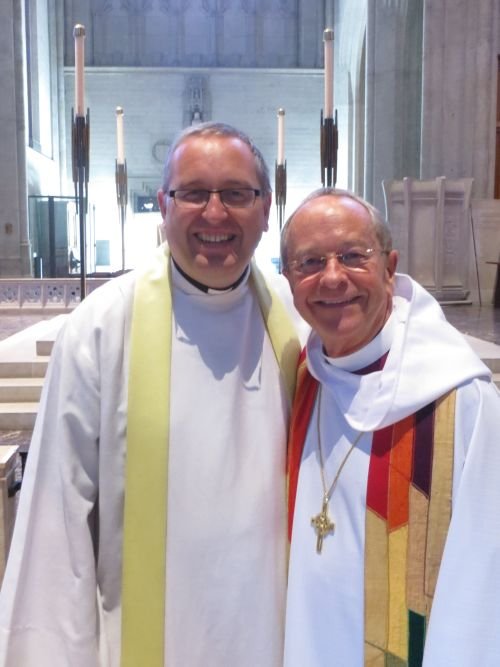A couple of people have asked me to give details of the service of Benediction which can be used in the Scottish Episcopal Church where a couple conduct a marriage which is a legal marriage but one which is irregular under canon law.
The form of service that we are talking about is this one:
A FORM OF BENEDICTION OF MARRIED PERSONS
The canon that governs marriage in the Scottish Episcopal Church includes this clause:
5. A cleric may use the form of Benediction provided in the Scottish Book of Common Prayer (1929) to meet the case of those who ask for the benediction of the Church after an irregular marriage has been contracted or after a civil marriage has been legally entered into, provided only that the cleric be satisfied that the marriage is not contrary to Sections 3 and 4 of this Canon.
Here’s the whole thing if you want chapter and verse.
Now, the reason this is interesting at the moment is that the Scottish Government is keen to introduce the possibility of marriage for same-sex couples. I’m very much in favour and hope that the Scottish Episcopal Church enjoys a fruitful discussion about these matters over the next months and hope that the result of those discussions is that we can opt into whatever means the government chooses in order the enable those marriages to happen. Now, obviously, one matter that will need some attention is the marriage liturgy. There will need to be some work put in to ensure that it can be used for all marriages. This won’t be too much trouble though as we’ve plenty of experience of rewriting liturgies in inclusive language. (Not least the fairly recent rewrite of the ordinal to ensure that it did not use male pronouns all the way through the liturgy for making someone a bishop).
One little detail which seems to have passed most people by is that the Canon which governs marriage in the Scottish Episcopal Church explicitly authorises an old form of words, the Service of Benediction from the Scottish Prayer Book for use for a couple whose marriage is legal but cannot for some reason be regarded as having been regularly conducted according to the canons of the Scottish Episcopal Church. For a long time, this was the mechanism by which divorced people could have a blessed (ie a benediction) in church after a civil marriage.
Nowadays, most couples where one person or other has been divorced can have a marriage in church anyway, by going through a pastoral procedure involving the bishop.
However, the clause permitting Benediction still exists. Its only stipulation (and it uses the word “only” quite explicitly) is that the marriage is a legitimate one and that the couple have not been refused a marriage by a bishop if they have gone through the pastoral process pertaining to divorce.
The consequence of all this is that once the Scottish Government legalises marriage for same-sex couples, the Scottish Episcopal Church has on its hands a piece of Canon Law which permits those couples to be blessed in church using an authorised liturgy.
The liturgy itself would need some very minor modifications to be modified for inclusive language of course, but clergy do that all the time.
Here are two versions of the text to show how easily that can be done:
A FORM OF BENEDICTION OF MARRIED PERSONS for gay men
A FORM OF BENEDICTION OF MARRIED PERSONS for lesbians
Now, someone might want to argue that section 1 of Canon 31 (which is a doctrinal statement) prohibits this. But the point it, Canon 31 has a number of clauses which all have the same validity. Section 5 was explicitly put into the canon to deal with situations where a couple’s marriage did not fit within the boundaries of Section 1.
Anyone attempting to argue that Section 5 does not apply if a couple’s marriage falls outwith the doctrinal boundary of Section 1 risks casting a slur upon those divorced persons blessed in church under the canon thus far. Such an argument would undermine the position of the Faith and Order Board’s recent first submission to the Scottish Government. It would also undermine the Grosvenor Essay produced last year by the Doctrine Committee. (You can’t argue that Section 1 of the canon means what it literally says amidst fast changing circumstances without also applying the same standards to Section 5).
Without taking any actions, the Scottish Episcopal Church is going to find itself in the interesting position of having a service, albeit an archaic one, of blessing for gay couples authorised because of the actions of the Scottish Parliament.
Now, wouldn’t it be much more sensible for us to have some discussions about this in the synod instead to ensure that there are appropriate resources for everyone who is engaged in ministry with engaged couples in our church?

Recent Comments